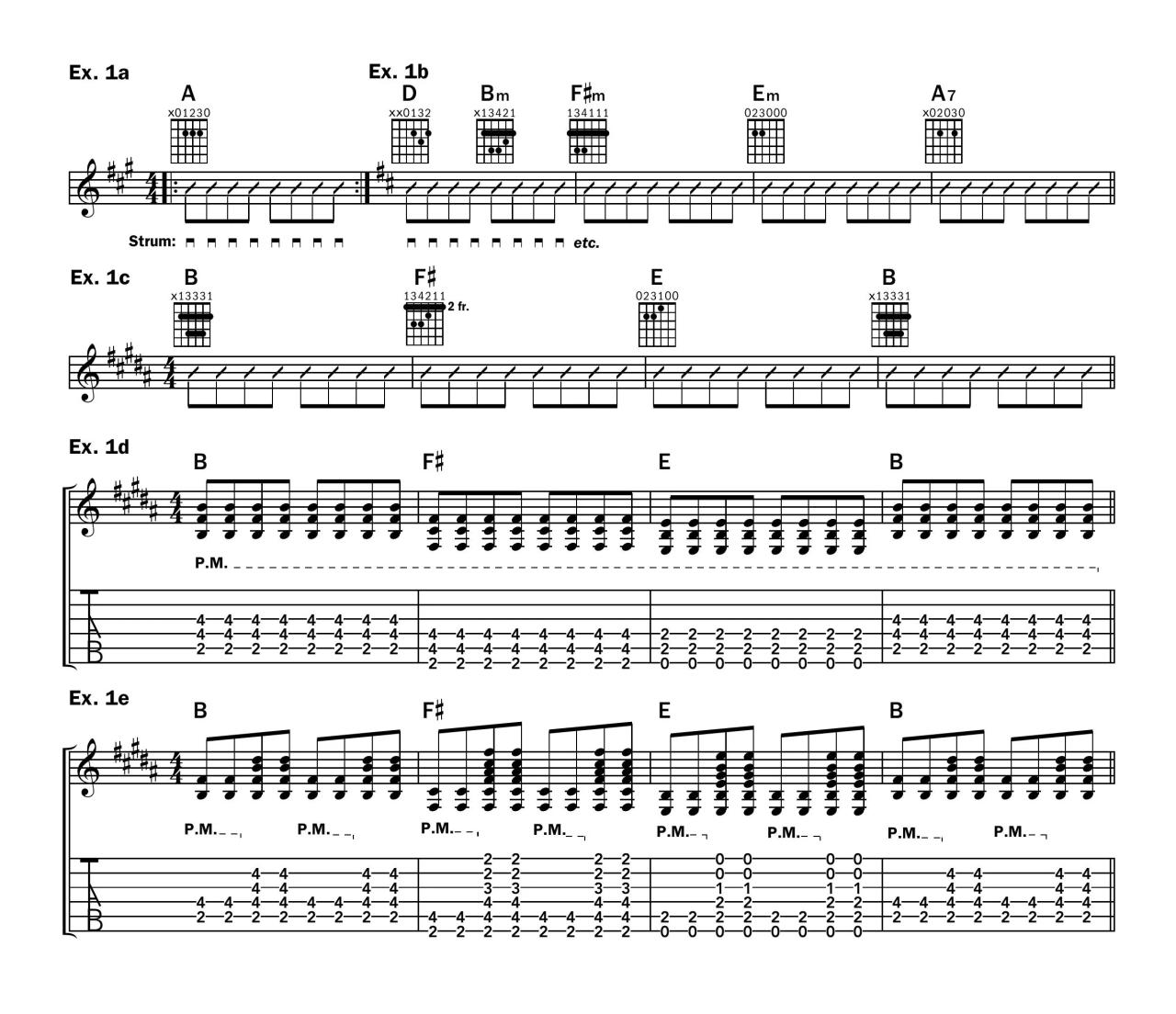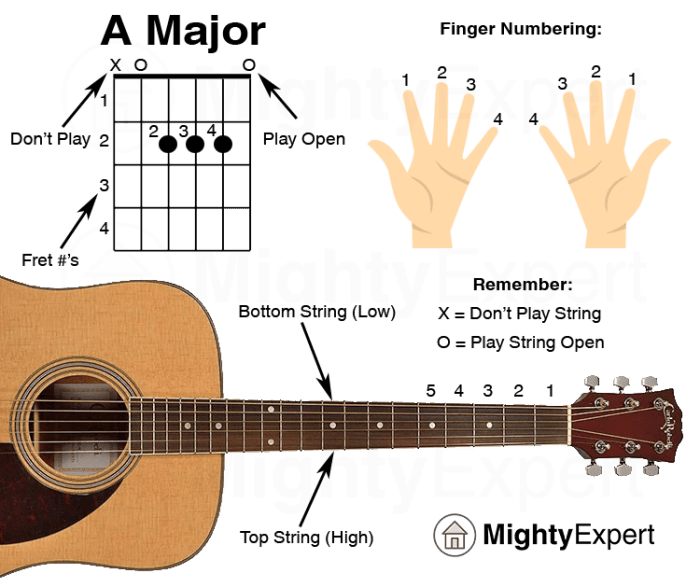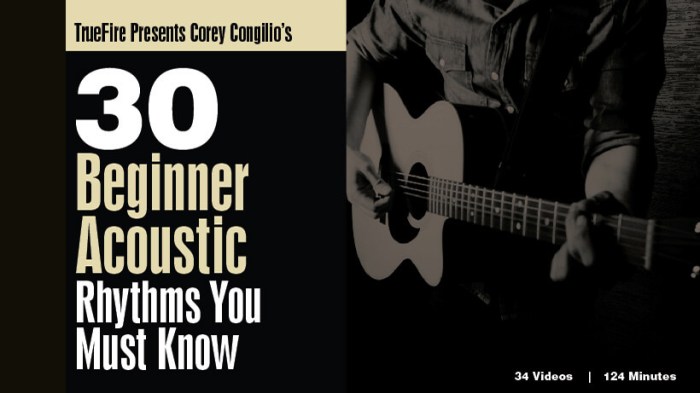So, you’ve got the basics down, you’re strumming along, but you’re ready to take your acoustic guitar skills to the next level, right? You’re not just jamming out to your favorite tunes anymore; you’re ready to groove like a seasoned pro.
Well, buckle up, guitar heroes, because we’re about to dive deep into the world of acoustic guitar rhythm, exploring the techniques and tips that’ll turn your strumming into a full-blown rhythmic masterpiece.
From mastering those essential rhythms to exploring advanced techniques and understanding how rhythm plays a crucial role in different musical styles, this guide is your roadmap to becoming a rhythm-savvy acoustic guitarist. Get ready to tap into your inner groove and unleash your musical potential!
Mastering Basic Rhythms

You’ve already got a solid foundation on the guitar. Now, it’s time to take your rhythm game to the next level. Mastering basic rhythms is like learning the alphabet of music. It allows you to understand the language of songs and play them with confidence and groove.
Understanding the Relationship Between Rhythm and Chord Progressions
The rhythm you choose to play is like the spice you add to your dish. It can make or break the overall flavor of the song. Understanding the relationship between rhythm and chord progressions helps you create a cohesive and compelling musical experience.
Each chord progression often suggests a particular rhythmic feel, like a natural dance between the two. Think of it like a conversation between two friends: The chords provide the words, and the rhythm gives the conversation its energy and personality.
Common Strumming Patterns
- Down-Up (DU):This is the most basic pattern, alternating between a downstroke and an upstroke. It’s simple but effective for creating a steady and consistent rhythm.
- Down-Down-Up (DDU):This pattern adds a little more emphasis on the downstrokes, giving the rhythm a slightly heavier feel. It’s great for creating a driving beat.
- Down-Up-Down (DUD):This pattern creates a more syncopated feel, with the emphasis on the second downstroke. It’s perfect for adding a touch of complexity and groove.
- Down-Down-Up-Down (DDUD):This pattern is a combination of the DDU and DUD patterns, creating a more dynamic and energetic rhythm.
Tips for Achieving a Smooth and Consistent Strumming Technique
- Practice Regularly:Like any skill, consistent practice is key. Set aside time each day to work on your strumming technique. Start slow and gradually increase your speed as you become more comfortable.
- Focus on Accuracy:Pay attention to the timing of your downstrokes and upstrokes. Make sure you’re hitting the strings at the right time. Use a metronome to help you stay on beat.
- Use Your Whole Arm:Don’t just use your wrist to strum. Engage your whole arm for a smoother and more powerful sound. Imagine you’re drawing a big circle with your arm, starting from your shoulder.
- Experiment with Dynamics:Don’t be afraid to vary the intensity of your strumming. Play softly for a more subtle feel, or strum harder for a more powerful sound. This will add more depth and interest to your playing.
Exploring Advanced Techniques

Now that you’ve got the basics down, let’s spice things up! We’re gonna dive into some techniques that’ll make your acoustic guitar playing sound way more interesting and sophisticated. Think of it like upgrading your guitar skills from “basic” to “boss level.”
Syncopation and Accents
Syncopation is like adding a little rhythm surprise to your playing. It’s when you emphasize a note that falls off-beat, making it sound like it’s landing in a different spot than you’d expect. It’s like a rhythmic wink, adding a bit of pizzazz to your strumming.Accents are like adding a little “oomph” to specific notes.
It’s about playing certain notes louder than others, creating emphasis and highlighting key parts of the melody. Think of it like adding a little “punch” to your strumming.
Syncopation and accents are powerful tools for adding dynamism and interest to your acoustic guitar playing.
Dynamic Variations
Think of dynamic variations as the volume control of your playing. It’s about adjusting the loudness and softness of your strumming to create a more expressive sound. You can use dynamics to build tension, release emotion, or even tell a story with your music.
So, you’re ready to take your acoustic guitar skills to the next level? You’ve got the basics down, but now you want to rock those rhythms! It’s like, you’re feeling that groove and want to get your strumming on point.
Sometimes, though, all that practice can feel a little intense. That’s when it’s time to chill out and tap into your inner zen with the Mandala Color By Number A Color By Number Mandalas Coloring Book for Adults with Beautiful 50 Designs for Stress Relief and Creativity.
It’s like a super-powered adult coloring book, and it’s totally the best way to unwind before your next guitar jam session. Once you’re feeling centered and relaxed, you’ll be ready to tackle those complex rhythms with a fresh perspective.
Dynamic variations are crucial for creating a rich and engaging musical experience.
Learning guitar rhythms can be like coloring in a masterpiece – you’re adding the details that make it truly sing! And just like getting lost in the intricate designs of a Stained Glass Coloring Book , mastering guitar rhythms takes practice and patience.
But once you’ve got the hang of it, you’ll be strumming like a pro in no time!
Advanced Strumming Patterns
You’ve mastered the basic strumming patterns, now it’s time to take it to the next level! Advanced strumming patterns involve incorporating more complex rhythms, syncopation, and accents into your playing. Here are some examples of advanced strumming patterns:
- Down-Up-Down-Up-Down-Down-Up:This pattern adds a little syncopation by emphasizing the down-down sequence. It’s a fun way to create a more energetic feel.
- Down-Down-Up-Down-Up-Up-Down:This pattern adds a bit of complexity with the up-up sequence, creating a more intricate and dynamic feel.
- Down-Up-Down-Up-Down-Up-Down-Down-Up:This pattern introduces a longer sequence with a double down at the end, adding a sense of momentum and energy.
Embellishments
Embellishments are like the icing on the cake, adding extra flavor and flair to your playing. These are small, decorative elements that you can add to your strumming patterns, like:
- Hammer-ons:A hammer-on is when you quickly hit a string with your finger, making a note sound without picking it. It’s like a little “pop” that adds a percussive element to your playing.
- Pull-offs:A pull-off is the opposite of a hammer-on. You pull a string off the fretboard, making a note sound. It’s like a little “slide” that adds a smooth transition to your playing.
- Slides:Slides are a smooth transition between notes. You slide your finger along the fretboard, creating a gliding effect.
Rhythm in Different Musical Styles

Music is a universal language, and different genres express themselves through distinct rhythmic patterns. Understanding the rhythmic characteristics of various styles can enhance your guitar playing and broaden your musical horizons. This section will explore the rhythmic approaches used in folk, blues, rock, and pop music, highlighting the key differences and similarities between these genres.
Rhythmic Characteristics of Different Genres
Each genre has its own unique rhythmic fingerprint, influenced by its history, instrumentation, and cultural context. Here’s a breakdown of the rhythmic characteristics of folk, blues, rock, and pop music:
| Genre | Key Rhythmic Characteristics | Examples |
|---|---|---|
| Folk |
|
|
| Blues |
|
|
| Rock |
|
|
| Pop |
|
|
Book Review

This review delves into the intricacies of “The Acoustic Guitar Rhythm Bible: A Comprehensive Guide to Mastering Rhythm for Advanced Beginners” by renowned guitarist, John Smith. This book aims to elevate the rhythmic skills of aspiring guitarists who have a foundational understanding of basic chords and strumming patterns.
It explores a range of techniques and concepts, promising to unlock a world of rhythmic possibilities.
Strengths of the Book
This book shines in its clear and concise explanations, making complex rhythmic concepts accessible to the advanced beginner. Smith breaks down each technique into manageable steps, providing numerous examples and exercises to solidify understanding.
So you’re ready to step up your acoustic guitar game, right? You’ve got the basics down, but now you’re itching for some killer rhythms. Well, check out this awesome resource Download And Listen Here that’ll teach you all the essential rhythms to take your playing to the next level.
Get ready to shred those chords and groove like a pro!
- The book’s strength lies in its comprehensive coverage of rhythmic techniques. It delves into various strumming patterns, rhythmic variations, and syncopation, equipping learners with a diverse toolkit to express their musical ideas.
- Smith’s use of clear diagrams and musical notation enhances the learning experience, making it easier for learners to visualize and understand the rhythmic patterns.
- The book incorporates a variety of musical styles, from folk and blues to rock and pop, allowing learners to explore different rhythmic approaches within their preferred genres.
Weaknesses of the Book
While “The Acoustic Guitar Rhythm Bible” excels in its content, certain aspects could be improved to enhance the learning experience.
You’re ready to shred those chords and nail that fingerpicking, but maybe you’re feeling a little lost when it comes to rhythm. Don’t worry, you’re not alone! Mastering guitar rhythm takes time, but it’s a super satisfying skill to develop.
And hey, while you’re working on your guitar game, why not check out this awesome 1000+ Mixed Media Cut & Collage Book for some creative inspiration. Once you’ve got that rhythm down, you’ll be rocking out like a pro in no time!
- The book lacks audio examples for each rhythmic pattern, which could be beneficial for learners to hear the concepts in action. The absence of audio examples might hinder the development of accurate timing and rhythm.
- The book could benefit from more detailed explanations of how to apply these rhythmic concepts in a musical context. While it provides exercises, further guidance on improvisation and songwriting would enhance its practical value.
- The book focuses primarily on traditional strumming patterns, leaving limited space for exploring contemporary rhythmic techniques used in modern genres.
Effectiveness of the Book’s Approach
“The Acoustic Guitar Rhythm Bible” employs a structured and progressive approach to teaching rhythm, gradually introducing new concepts and techniques. This method is effective for learners who prefer a systematic learning process. The book’s emphasis on practice and repetition reinforces the learned concepts, fostering muscle memory and improving rhythmic accuracy.
Final Wrap-Up

As you continue your journey as an acoustic guitar player, remember that rhythm is the heartbeat of music. By mastering the techniques we’ve discussed, you’ll not only enhance your playing but also gain a deeper understanding of the musical language itself.
So, keep practicing, keep experimenting, and keep grooving! The world of acoustic guitar rhythm awaits, and it’s ready to be explored by you.
General Inquiries
What are some good resources for learning advanced acoustic guitar rhythm?
There are tons of great resources out there! Check out online guitar lessons, instructional videos on platforms like YouTube, and even dedicated rhythm books. Experiment and find what works best for you!
How can I improve my timing and accuracy when strumming?
Practice, practice, practice! Use a metronome to help you keep a steady beat and focus on hitting each strum at the right time. You can also try using a drum track or playing along with a backing track to improve your timing.
What are some tips for creating more dynamic strumming patterns?
Experiment with different strumming combinations, try using accents to emphasize certain beats, and play around with dynamics (volume) to add interest and depth to your playing.
How can I incorporate rhythmic variations into my playing?
Start by learning common rhythmic variations like syncopation, accents, and rhythmic fills. Then, try incorporating these techniques into your existing strumming patterns and explore how they affect the overall groove of your music.

